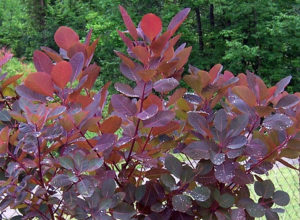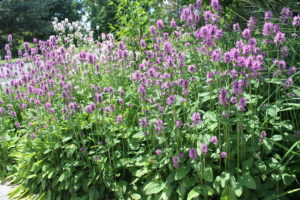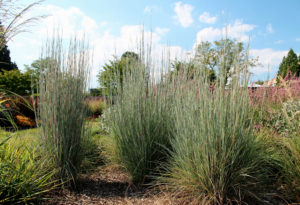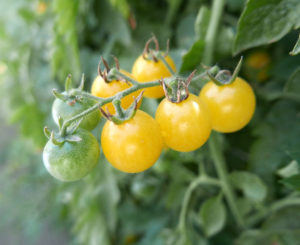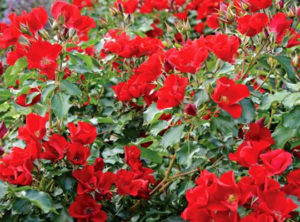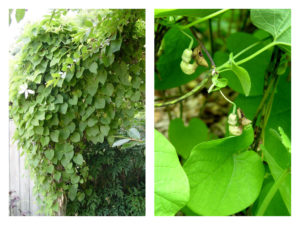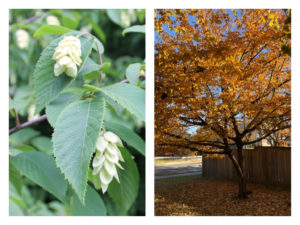Best Plants for Your Yard? Try These 2019 Award-Winners
March 26th, 2019
Picking the best plants makes a big difference in whether your landscape thrives or withers.
Genes matter.
So how do you sort the strong from the weak?
One way is to lean on the experience of the experienced.
Each year, organizations of growers, horticulturists, researchers, and other plant experts bestow awards on top plant performers – some new, some just under-used.
Here’s a look at plants that have won honors for 2019:
A panel of experts assembled by the Pennsylvania Horticultural Society (best known for running the Philadelphia Flower Show) each year picks trees, shrubs, and perennials worthy of greater use in Pennsylvania landscapes.
For 2019, six plants made the Gold Medal grade.
Kousa dogwood ‘Wolf Eyes.’ A showy, slow-growing, 10-foot tree that’s most striking for its ivory-edged variegated leaves that turn pinkish-red in the fall. It also flowers white in June and gets red berries in September. Grows best in part shade.
Purple smokebush ‘Grace.’ A multi-stemmed tree with dark purple-burgundy leaves that’s best cut back hard each year to grow as an eight-foot bush. If not pruned, it produces large pink flowers in May and June that look like smoke puffs. Grows best in part sun and moist soil.
Juniper ‘Robusta Green.’ A narrow, upright Chinese juniper with blue-green needles. Grows 10 to 15 feet tall and five to seven feet wide, ideally in full sun.
Chrysanthemum ‘Hillside Sheffield Pink.’ A reliably winter-hardy perennial flower that grows three feet tall and wide and has soft pink, daisy-like flowers that bloom for weeks in late summer. Grows best in full sun.
Little bluestem ‘Standing Ovation.’ A flop-resistant, deer-resistant, drought-resistant native ornamental grass with blue-green stems that turn to red, purple, and orange in fall. Grows three feet tall, ideally in full sun.
Betony ‘Hummelo.’ A trouble-free, long-blooming, winter-tough perennial that sends up flower spikes of purple-lavender from late spring into early summer. Flowers poke up about 18 inches and produce well in full sun to part shade.
(Disclosure: I’m a member of the Gold Medal panel.)
Members of the Perennial Plant Association vote to honor one perennial plant each year that’s superior in terms of performance, low care, pest resistance and multiple-season interest. The 2019 winner is…
Betony ‘Hummelo.’ It’s rare for the same plant to win honors from two separate, unrelated groups in the same year, but this one did it. PHS and PPA experts both think it’s a winner deserving better notoriety and more garden use.
Although ‘Hummelo’ was introduced by German grower Ernst Pagels in the late 1990s, this cousin of lamb’s ear is just now being more widely recognized for its superior performance.
This program, run by the staff and Horticulture Committee at Jenkins Arboretum and Gardens in Devon, Pa., focuses on singling out some of our region’s best native plants for home landscapes.
An ornamental grass, a shrub, and a shade tree won 2019 Green Ribbon awards:
Little bluestem. A deer-resistant prairie grass that once covered much of the central and eastern United States, little bluestem is best known for its bluish blades that turn coppery in fall. Plants grow two to four feet tall and produce fluffy, purplish seed heads. Full sun.
Florida anise tree. Borderline winter-hardy in central Pennsylvania, the anise tree is a rounded shrub, growing eight to 10 feet tall and six to eight feet wide. It’s evergreen from Zone 7 to Florida and produces burgundy star-shaped flowers in mid-spring. Shade to part shade.
Yellowwood. A 40- to 50-foot native tree with smooth bark, large hanging clusters of fragrant white flowers, and yellow fall foliage. It also produces long, bean-like fruits in fall. Full sun to part shade.
Independent researchers each year evaluate hundreds of new flowers and vegetables in dozens of trial gardens throughout the United States. The highest scorers get All-America Selections awards.
Four new annual flowers and four new vegetables were good enough to win 2019 national or Northeast regional AAS honors. All grow best in full sun:
Begonia Viking XL Red on Chocolate. A hefty three-footer that produces red flowers all summer, backdropped beautifully by glossy leaves of dark burgundy bordering on black. Does reasonably well in part shade, too.
Marigold Big Duck Gold. A 15-incher with unusually large flower heads of golden-yellow.
Petunia Wave Carmine Velour. The latest in the popular Wave series, this one blooms heavily in a velvety carmine-rose color. Can trail three to four feet.
Nasturtium Baby Rose. A compact, mounded version of an old-fashioned favorite with rounded flowers of deep rose. Both the leaves and flowers are edible.
Pepper Just Sweet. As the name suggests, sweet flavor is the standout feature of this oblong yellow pepper with three-inch fruits.
Tomato Fire Fly. A small-sized cherry tomato with pale yellow round fruits and very sweet flavor.
Tomato Red Torch. An oblong, grape-type tomato distinguished by its red-striped color, prolific yield, sweet flavor, and heat tolerance.
Melon Orange SilverWave. A disease-resistant South Korean-bred melon that has a green-streaked white rind and very sweet orange flesh inside. Oval fruits grow about 5 inches long and weigh three to four pounds each.
American Garden Rose Selections
This new program of the rose industry and American Rose Society replaces the defunct, decades-old All-American Rose Selections program. Roses have to pass muster for low care and disease resistance in trials at a dozen U.S. gardens.
Only one rose earned an AGRS award in the Northeast region for 2019:
Look-a-Like BougainFeelYa. A long-blooming, bushy shrub rose from Chester County’s Star Roses and Plants that has dark-red flowers with loose, open petals that resemble the tropical flowering vine bougainvillea. Grows four feet tall.
Garden Club of America Plant of the Year
This award is bestowed by the national organization of garden clubs, which appoints a plant-expert panel to name one outstanding U.S.-native plant worthy of the Montine McDaniel Freeman Medal.
The 2019 medal-winner:
Dutchman’s pipe. A fast-growing native vine with heart-shaped leaves and pale-yellow flowers shaped somewhat like a pipe. It blooms mainly in May and June, self-climbs by twining up supports, and is the host plant for the pipevine swallowtail butterfly. Full sun to part shade.
Members of the American Rhododendron Society have a Rhododendron of the Year Committee that selects top-performing rhododendrons and azaleas in eight different regions.
Four winners were named for 2019 in the Mid-Atlantic region, which includes much of Pennsylvania. Ideal light is morning sun and afternoon shade.
Large-leaf rhododendron: ‘Ken Janeck.’ A May-blooming, compact evergreen that produces dark-pink buds that open to pink flowers that fade to white. The fuzzy leaf undersides discourage bugs, disease, and deer. Grows three feet tall by five feet wide in 10 years.
Small-leaf rhododendron: ‘Rhein’s Luna.’ Bred by Mechanicsburg’s own Dr. William Rhein, the late dentist turned prolific rhododendron breeder in retirement, this plant grows about six feet tall and slightly narrower and produces light lavender-blue flowers in May.
Evergreen azalea: ‘Treasure.’ A May bloomer with large, fragrant, single white flowers with pink spots in throat. Grows about four to five feet tall and wide.
Deciduous azalea: Cumberland azalea (Rhododendron cumberlandense). Native to the Cumberland plateau of Kentucky and Tennessee (not Cumberland County, Pa.), this leaf-dropping azalea blooms in a blend of orange, red, apricot, and salmon in mid to late June. Grows five to six feet tall and wide.
Members of the America Hosta Growers Association each year vote on a favorite hosta variety that must be a superior performer nationwide. This year’s winner:
‘Lakeside Paisley Print.’ A small to mid-sized blue-green hosta with ruffled, cupped foliage and yellow variegation in the leaf centers. Produces purple flowers in June. Grows about a foot tall and does best in shade to part shade.
The Society of Municipal Arborists, whose members are government tree experts and urban foresters, each year picks a tree deserving greater use because of tolerance to harsh, urban conditions combined with “strong ornamental traits.”
The 2019 winner is:
American hophornbeam. A slow-growing, 30-foot-tall, birch-family tree native to the Eastern U.S. with summer catkins that look like hops (of beer-making fame). The habit is slightly drooping, the bark flakes as its ages, and fall color is yellow. Grows in sun or part shade.








